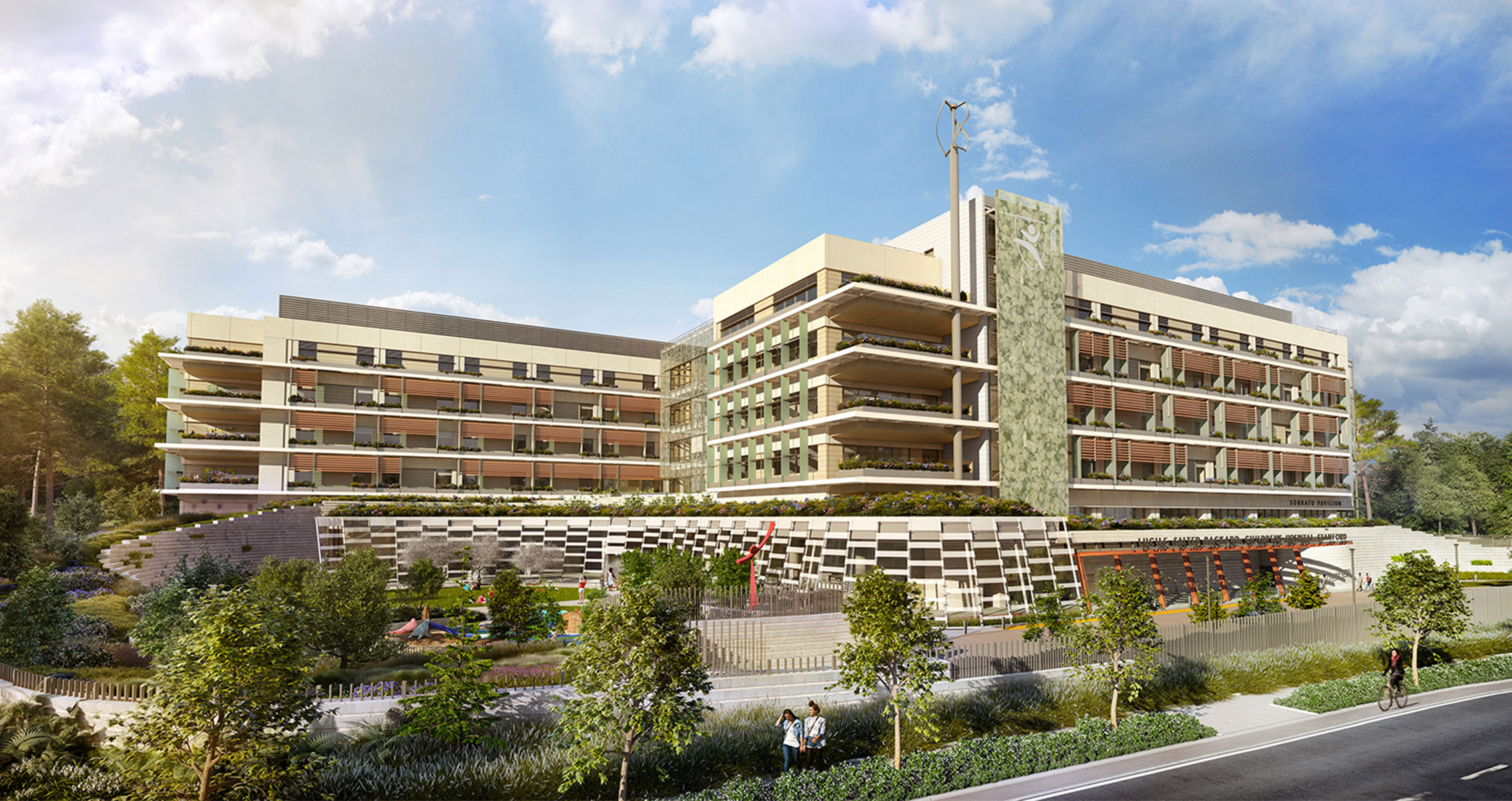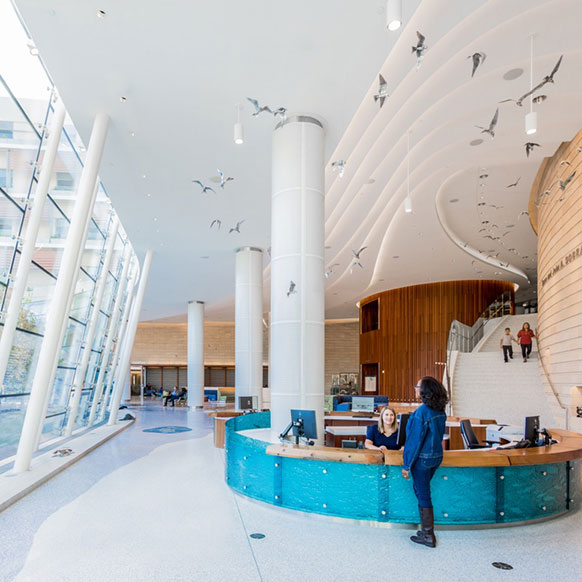Perkins&Will, a global architecture and design firm, and HGA, an integrated architecture and engineering firm, together celebrate the countdown to the completion of the new Lucile Packard Children’s Hospital Stanford. Slated to open in December 2017, the project will set a new standard in sustainable and family-centered design for healthcare.
“We are approaching the culmination of nearly a decade of planning, design and construction activity – the sheer size and scope of the project is remarkable,” says Robin Guenther, sustainable healthcare leader at Perkins&Will and the project’s lead architect. “We are all proud of the work that has been accomplished thus far, and excited that the facility will open its doors to patients and their families.”
“Creating an environment inclusive of both parents and children was a key goal of the design,” said Dan Rectenwald, healthcare principal and chief operating officer at HGA. “Through open houses, simulations, tours and feedback from physicians, hospital staff and the Packard Children’s Family Advisory Council, the project team was able to design a facility which sets patient safety and the patient-family experience as the highest priority.”
Through Perkins&Will’s exterior and interior design, and HGA’s medical planning, the project will achieve key goals as established by Packard Children’s – all focused on creating America’s most technologically advanced, family-friendly, and environmentally sustainable hospital for babies, children and expectant mothers.
Design Highlights
With an emphasis on holistic healing, the hospital will embrace evidence-based design features, like plentiful views of nature, access to the outdoors, and abundant natural light as well as a host of innovative sustainability features, like the recovery of water from condensate and other processes for landscape irrigation, the creative use of recycled and reclaimed local materials, and a unique external shading system to reduce the need for air conditioning. In fact, Packard Children’s is designed to use 38 percent less water and 60 percent less energy than the average Northern California hospital. The building’s ongoing water and energy usage will be displayed on an electronic dashboard in the main lobby and on bedside entertainment systems, allowing children to compare energy consumption in different areas of the hospital. The building is on track to earn LEED Gold certification.
All patient floors will feature outdoor patios with overlooks, and a non-denominational sanctuary that opens to an outdoor healing garden, which will allow for quiet meditation and prayer. Locally grown food will be served in the hospital’s café, and locally crafted art will decorate the building and surrounding campus. Additionally, the facility’s wayfinding system will be based on California’s various ecoregions, boasting colorful wall art, educational signage and graphics of nature that will help patients and families navigate the hospital units while learning about their local natural environment.
Medical Planning Highlights
In planning the medical spaces, the focus was on creating a comfortable atmosphere for children and their families that also incorporates operational efficiencies to ensure the best care. In each nursing unit, caregivers will have a direct line of sight from their workstations into patient rooms. The appearance of heavy equipment within the patient rooms will be minimal, making the rooms less intimidating for children. Sinks, water coolers and other amenities will also be built at child height. The majority of the new rooms will provide additional privacy and space for patients and their families; all rooms will include sleeping accommodations for two family members. In addition, every patient floor will include a family lounge, child life room, patient-family kitchen, and laundry facilities to help promote a home-like environment.
Colocation of medical services, including the merging of imaging and surgery platforms, will increase efficiency in processes and result in less travel time for anesthesiologists. Staff circulation routes will be separate from those of patients and their families, and medication alcoves located directly outside of patient rooms will decrease the amount of time caregivers need to retrieve medication while keeping the main hallways clear of pedestrian traffic. Pharmacy spaces will be located in the same location on every floor, allowing for a shared lift for moving medications to optimize efficiency.
DPR Construction is the general contractor on the project.
For more information about Packard Children’s, visit www.stanfordchildrens.org.


